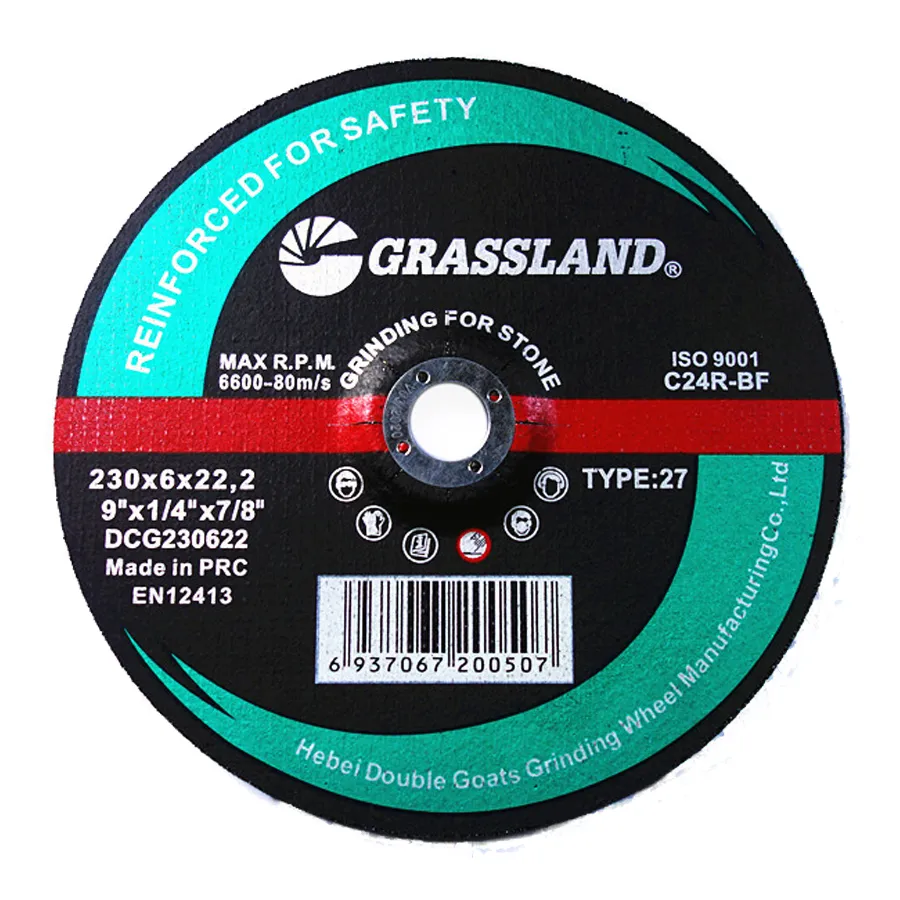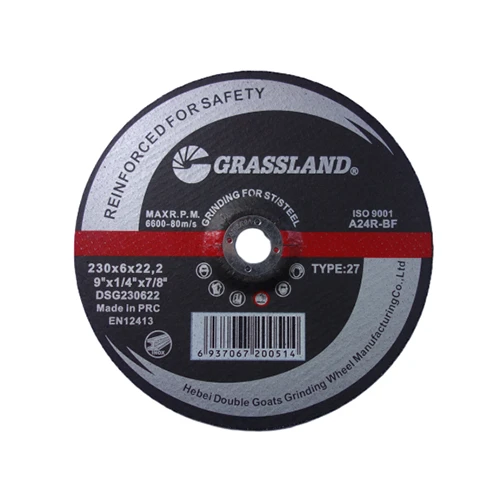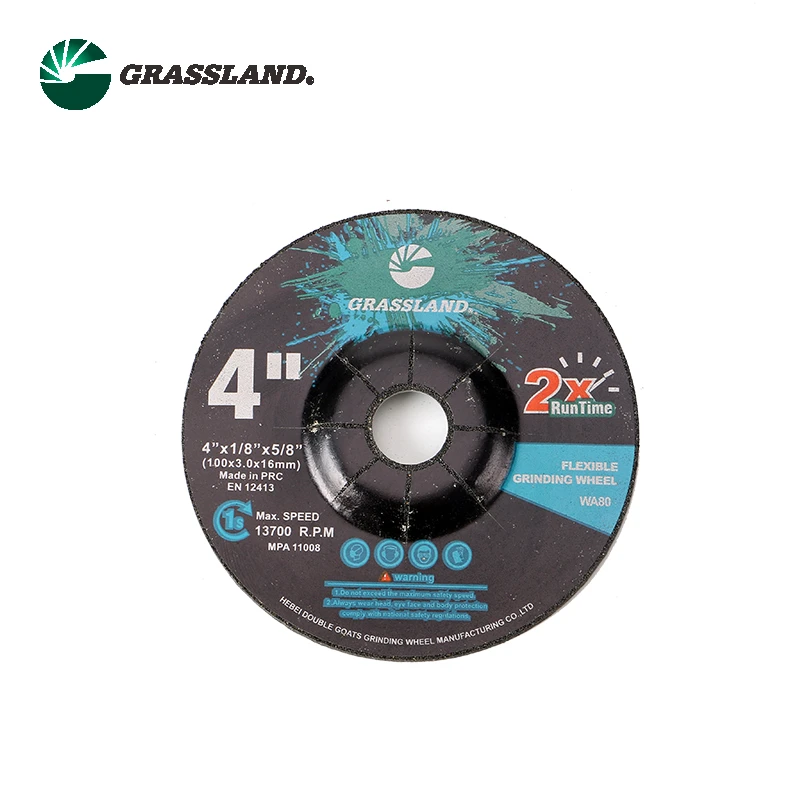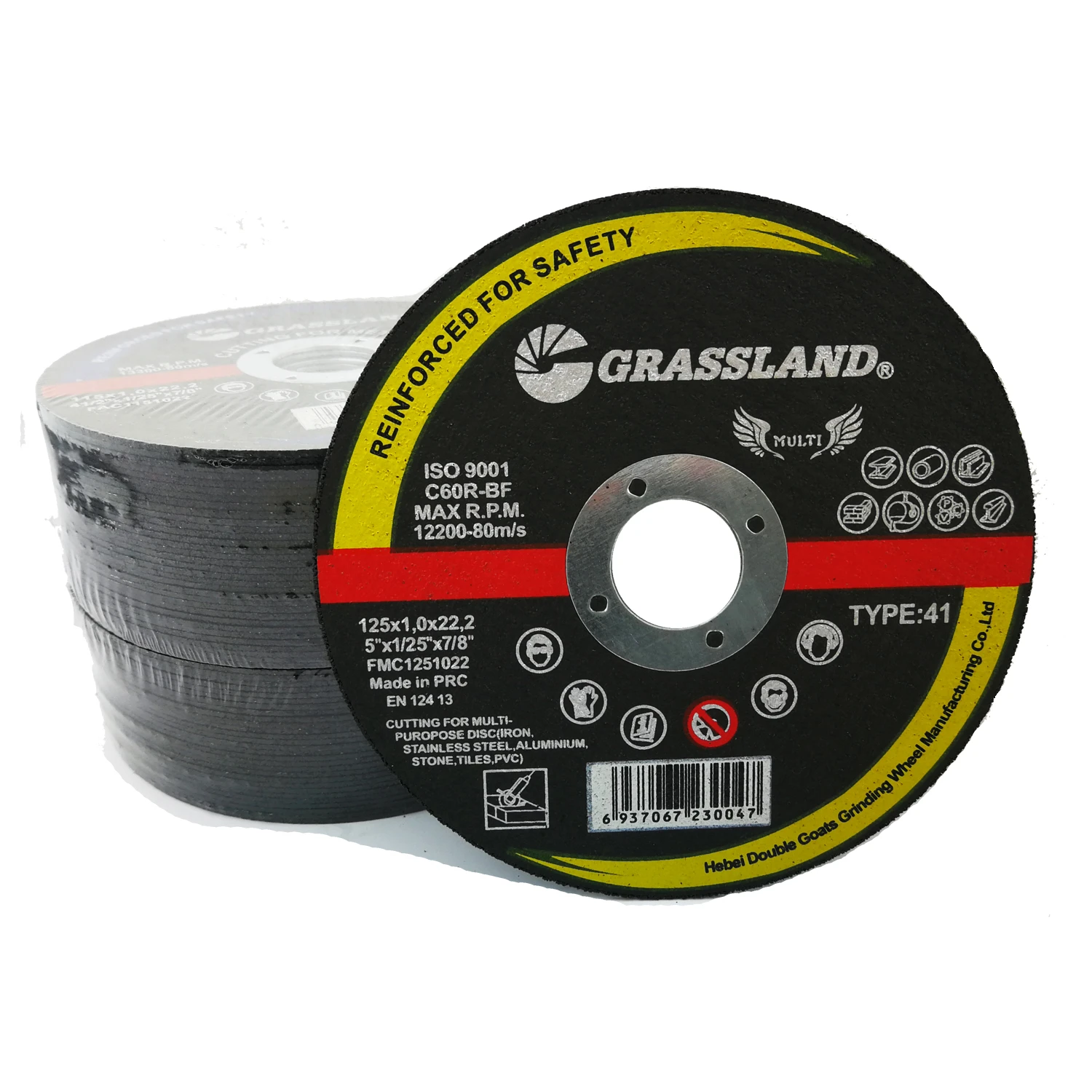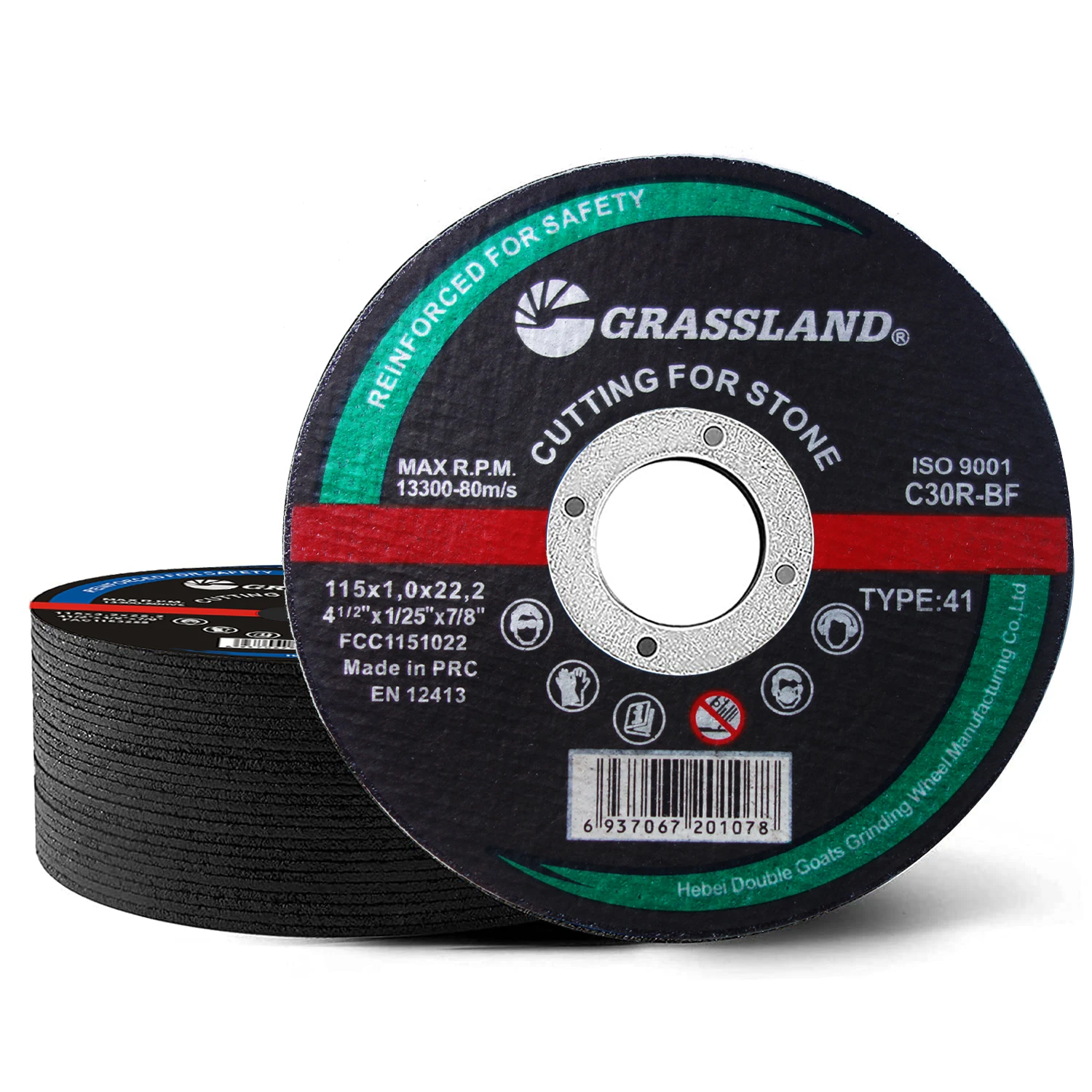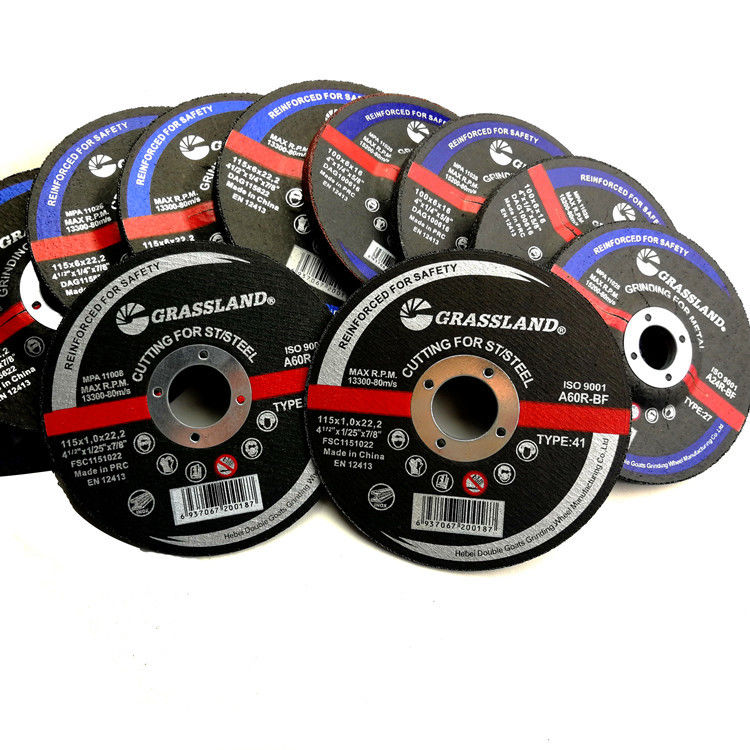- Comprehensive overview of modern grinding wheel technologies for metalworking applications
- Performance statistics demonstrating productivity gains with premium abrasives
- Technical innovations enhancing grinding efficiency and safety
- Comparative analysis of leading grinding wheel manufacturers
- Customized solutions for specialized metal removal requirements
- Industrial application case studies across aerospace and automotive sectors
- Selection guidance for optimized metal grinding outcomes
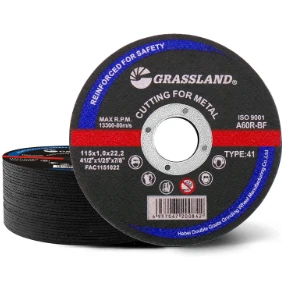
(grinding wheels for metal)
Understanding Grinding Wheels for Metal
Precision grinding operations depend fundamentally on selecting appropriate abrasives. Grinding wheels for metal consist of aluminum oxide, silicon carbide, ceramic grains, or diamond/CBN superabrasives bonded into composite structures. Key specifications include abrasive type, grit size (24-120 coarse, 150-180 medium, 220+ fine), bond strength (vitrified glass vs. resin vs. metal), wheel grade (hardness), and structure (grain concentration). The global metal grinding abrasives market surpassed $15.2 billion in 2023, with 6.8% annual growth projected through 2030 according to industry analysis. Primary metalworking applications involve surface grinding, cylindrical grinding, tool sharpening, and stock removal operations across manufacturing industries.
Productivity Impact Analysis
| Wheel Type | Stock Removal Rate (mm³/s) | Wheel Life (min) | Surface Finish (Ra μm) |
|---|---|---|---|
| Standard Aluminum Oxide | 15-20 | 45-55 | 1.8-2.3 |
| Premium Ceramic Alumina | 35-42 | 90-120 | 1.2-1.5 |
| Hybrid Ceramic Diamond | 55-65 | 220-300 | 0.6-0.9 |
Grinding wheel selection directly impacts operational costs. Ceramic grain wheels demonstrate 62% higher material removal rates compared to conventional abrasives while producing finer finishes, reducing subsequent polishing requirements. The shift toward advanced ceramics has generated 22-28% reduction in per-part grinding costs across automotive component manufacturers. Operator safety improves substantially with modern reinforced wheels - injury rates decreased 40% after implementing fracture-resistant designs meeting ANSI B7.1 standards.
Engineering Advancements
Manufacturing breakthroughs include engineered grain geometries (precise crystal structures), nano-scale grain coatings, and hybrid abrasive formulations. Continuous-rim diamond wheels maintain constant diameters during prolonged usage, achieving ±2μm dimensional stability in aerospace turbine grinding. Ceramic grain micro-fracturing creates self-sharpening edges that sustain cutting action 4X longer than aluminum oxide alternatives. Vacuum-brazed superabrasive tools with 70-90% concentration withstand 45m/s peripheral speeds during high-efficiency grinding of hardened steel. Rigorous testing validates these innovations: premium wheels demonstrate 70% vibration reduction and 12dB noise attenuation versus conventional abrasives.
Manufacturer Comparison
| Supplier | Technology | Core Specialization | Unique Advantage |
|---|---|---|---|
| Norton Abrasives | SG Ceramic | Precision Grinding | Microcrystalline structure extends wheel life 300% |
| 3M Cubitron | Precision-Shaped Grain | High-Pressure Grinding | Consistent grain fracture yields uniform performance |
| Radiac Abrasives | CBN Vitrified | Tool/Cutter Grinding | Thermal stability maintains geometry during HSS grinding |
| PFERD Cut-Tech | Ceramic Resin Bond | Portable Grinding | Optimized for 4-1/2" angle grinders & restricted areas |
Leading manufacturers develop distinct capabilities: Norton dominates precision surface grinding sectors while Radiac specializes in CNC tool grinding applications. PFERD excels in portable solutions including high-performance 4-1/2 metal grinding wheels optimized for confined-space welding preparation. These segmented designs incorporate glass fiber reinforcement meshes that reduce wheel breakage risks during side-loading common in maintenance operations.
Customized Solutions
Application-specific formulations address unique production challenges. Nickel-alloy grinding requires open-structure vitrified CBN wheels (grade J-K) with 70% concentration to prevent loading while maintaining form accuracy. For titanium aerospace components, resin-bond diamond wheels with specialized coolants prevent metallurgical damage. Portable 4-1/2 grinding wheels incorporate customized segment geometries optimizing contact pressure distribution during weld seam removal. One automotive supplier reported 50% cost reduction after switching to bespoke resin-bond alumina wheels designed exclusively for their camshaft grinding sequence.
Implementation Case Studies
Aerospace Turbine Blade Root Grinding: Transitioning to hybrid ceramic diamond wheels increased output from 12 to 19 blades/hour while eliminating subsurface recast layer issues previously requiring manual polishing. Wheel consumption decreased 76% annually, generating $415,000 cost savings.
Automotive Transmission Shaft Production: Precision CBN wheels improved dimensional consistency (±5μm) during centerless grinding of hardened shafts (60-62 HRC). Gauge R&R study revealed 92% process capability improvement, reducing scrap rates from 5.7% to 0.8% across three production shifts.
Structural Steel Fabrication: Implementing reinforced 4-1/2 grinding wheels with ceramic alumina abrasive reduced weld-clean time per meter from 7.2 to 4.3 minutes while extending wheel service life from 15 to 41 minutes between changes.
Optimizing Grinding Wheels for Metal Applications
Effective abrasive implementation begins with material compatibility assessment: ferrous metals typically require aluminum oxide or ceramic abrasives, while carbide and hardened steels demand diamond/CBN solutions. For manual operations like weld grinding, 4-1/2 metal grinding wheels should incorporate safety features including fiberglass backing pads and reinforcement mesh. When evaluating types of grinding wheels used in grinding machine operations, prioritize wheels with temperature-tolerant bonds that maintain structural integrity at operational RPMs. The most successful implementations combine appropriate abrasive selection with complementary variables - optimized feed rates (typically 0.5-20 m/min depending on operation), coolant application techniques, and dressing parameters maintaining wheel topography.
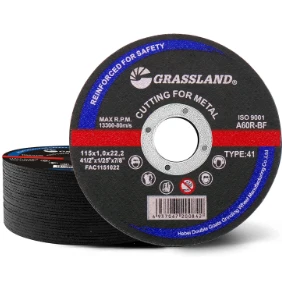
(grinding wheels for metal)
FAQS on grinding wheels for metal
Q: What are the common types of grinding wheels used for metal?
A: Common types include aluminum oxide, silicon carbide, diamond, and ceramic-bonded wheels. Aluminum oxide is ideal for high-tensile metals like steel, while diamond wheels excel on hard alloys. Ceramic wheels offer precision for specialized applications.
Q: What applications are 4 1/2-inch metal grinding wheels suited for?
A: These wheels are ideal for handheld angle grinders in tasks like deburring, weld removal, and surface prep. Their compact size balances maneuverability and material removal rates. Ensure they match your grinder’s RPM rating for safety.
Q: How do I choose the right grinding wheel for a metal grinding machine?
A: Consider the metal type, grit size, wheel hardness, and bond material. For example, use silicon carbide for cast iron or non-ferrous metals. Always check the machine’s specifications for compatible wheel dimensions and RPM limits.
Q: What safety precautions are vital when using metal grinding wheels?
A: Wear protective goggles, gloves, and a face shield. Inspect wheels for cracks before use, and ensure they’re securely mounted. Avoid excessive pressure to prevent wheel breakage or overheating.
Q: What distinguishes aluminum oxide wheels from diamond wheels for metal?
A: Aluminum oxide wheels are cost-effective for general-purpose grinding on steel and alloys. Diamond wheels, with industrial-grade diamond abrasives, handle ultra-hard metals like tungsten carbide. The latter offers longer life but higher costs.
Post time:May - 30 - 2025







